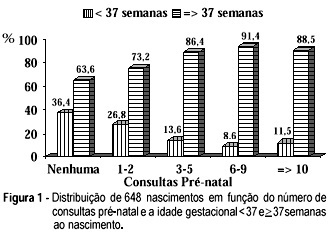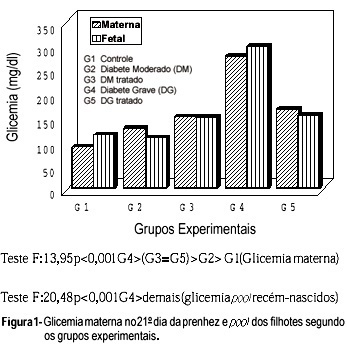Summary
Revista Brasileira de Ginecologia e Obstetrícia. 1998;20(1):37-43
DOI 10.1590/S0100-72031998000100007
We conducted a prospective cross-sectional study to evaluate the accuracy of the breast self-examination (BSE) in the detection of palpable breast lumps and the relation to its frequency of performance. Two thousand six hundred and seventy two women who have had a mammogram in a private clinic in Vale dos Sinos-RS between January 1994 and July 1997 were asked about BSE performance frequency. They were divided in two groups: group I (monthly), group II (almost never). The women who referred performing BSE on a occasional basis were excluded from the main analysis. The woman was asked wheter she or her physician had palpated something in her breasts. The patient's BSE findings were compared with those of her physician (based on the patients' report). The sensitivity of the BSE was higher in group I compared to group II (57.4% versus 33.3%; rho<0.05). We concluded that there is an association between frequency of performance and sensitivity of BSE to detect breast lumps.
Summary
Revista Brasileira de Ginecologia e Obstetrícia. 1998;20(1):33-35
DOI 10.1590/S0100-72031998000100006
We have analyzed 93 pregnant women with Papanicolaou smears suggesting human papillomavirus (HPV) infection (Schneider et al's criteria) with the purpose of studying the effect of maternal age, stage of pregnancy and number of pregnancies on the incidence of this infection. The control group consisted of 93pregnant women with Papanicolaou smears not suggestive of HPV infection. The results demonstrated that HPV infection is associated with pregnant women under 20 years of age, but no differences were found regarding stage and number of pregnancies.
Summary
Revista Brasileira de Ginecologia e Obstetrícia. 1998;20(1):25-32
DOI 10.1590/S0100-72031998000100005
It is universally accepted that prenatal care has a beneficial impact on perinatal outcome. However, it is unclear whether access to early and frequent prenatal care influences the impact of pregnancy complications on birth weight. The objective of the present study was to determine the effectiveness of prenatal care, concerning antenatal visits (number and time of the first one), on gestational age and fetal weight at birth. We assessed prospectively the effect of the antenatal care in a group of 648 infants born consecutively at the University Hospital of Santa Maria, weighing from <1000 to >4000 g, and from <28 to >40 weeks of gestational age. Preterm delivery (<37 weeks) accounted for 17.7% of all deliveries, low birth-weight infants (<2500 g) for 20.5%, and very low birth-weight infants (<1000 g) for 2.8%. When the first antenatal visit was performed before the 12th week, only 5.1% of the babies were born with <37 weeks of gestational age or weight at birth of <2500 g. However, when the first visit was after the 28th week, the percentage of preterm delivery was 41.3% and of birth weight <2500 g was 43.5%. A significant association between higher frequency of antenatal visits, early care and decrease in preterm delivery frequency and low birth-weight infants was noted (p <0.001). We conclude that increase in the number of antenatal visits and early care can reduce the preterm delivery and low-birth weight infant rates.

Summary
Revista Brasileira de Ginecologia e Obstetrícia. 1998;20(1):19-24
DOI 10.1590/S0100-72031998000100004
Fetal and placental effects of insulin therapy on pregnancy of diabetic rats were studied. Alloxan was administered intravenously at the dose of 42 mg/kg of body weight. Five experimental groups were formed: control (G1, n=12), non-treated rats with moderate diabetes (G2, n=10), insulin-treated rats with moderate diabetes (G3, n=11),non-treated rats with severe diabetes (G4, n=12) and insulin-treated rats with severe diabetes (G5, n=10). Six hundred and thirty-four newborn rats and placentas wereprocured. The perinatal result of insulin therapy was directly related to the quality of glycemia control. Thus, inadequate control of moderate diabetes produced levels of moderate hyperglycemia, did not interfere with the newborn rats' body weight and decreased the proportion of LGA newborn rats. Adequate control of severe diabetes brought the newborn rat glycemia to normal levels, increased the newborn rats' body weight and decreased the proportion of SGA newborn rats. Adequate insulin therapy for severe diabetes diminished the weight of the placentas, but did not change the placental index.

Summary
Revista Brasileira de Ginecologia e Obstetrícia. 1998;20(1):13-18
DOI 10.1590/S0100-72031998000100003
The parpose of the present report was to determine the maternal mortality rate in São Paulo, the most frequent pathologies which caused death and the distribution of cases paccording to age. In thepresent retrospective study 179,872 death certificates from April 1993 to December 1995 of women from 10 to 49 years old. Were reviewed 761 death certificates were selected, in which the pregnancy state was either declared or presumed; pregnancy was confirmed in 291/761 cases and 53/761 cases are still under investigation. The data were tabulated, grouped and analyzed considering the age and cause of death, according to the 9th revised edition of ICD - International Classification of Diseases. Of the 291 positive cases, 82 (28.17%) did not show any reference to the pregnancy state in the death certificate (undernotification); 183/291 cases (62.89%) were direct maternal deaths and the main diseases leading to maternal death were: hemorrhage (47/183), preeclampsia-eclampsia (46/183) and abortion complications (43/183). Among the indirectly related causes of maternal death (79/291), cardiopaty was the most frequent (33/79). Hypertensive syndrome (preeclampsia-eclampsia and/or chronic arterial hypertension) were responsible for 58/291 cases (19.93%) of maternal deaths. This study allowed us to calculate the maternal mortality rate for São Paulo: 50.24:100,000 live births.
Summary
Revista Brasileira de Ginecologia e Obstetrícia. 1998;20(1):7-11
DOI 10.1590/S0100-72031998000100002
With the purpose of identifying the causes of maternal deaths, this study evaluated all cases of deaths of 10 to 49-years-old women which occurred in Recife, Pernambuco, Brazil, during 1992 and 1993. The data were obtained from 1013 death certificates and were complemented by medical and anesthetia records forms, nursing reports, necropsies and also interviews with physicians who took care of the women, or with their relatives. The main basic causes of maternal deaths identified were arterial hypertension (23.8%), infections (19.0%), abortion (11.9%), hemorrhage (9.5%), pulmonary embolism (4.8%) and anaesthetic accident (2.4%). About 70% of maternal deaths in Recife in the studied period were due to directo obstetrical causes.
Summary
Revista Brasileira de Ginecologia e Obstetrícia. 1998;20(2):91-95
DOI 10.1590/S0100-72031998000200006
Predicting pregnancy outcome from one or more maternal serum factors has been the subject of numerous investigations with controversial results. The aim of this study was to evaluate the serum levels of CA-125, CA-19.9, CA-15.3, beta-hCG, estradiol, progesterone, alpha-fetoprotein and CEA in women with abortion (n=18) and with pregnancy complicated by bleeding (n=6), in comparison to the serum levels of the control group (n=7). The results showed that the serum levels of CA-125 were significantly increased in the abortion group (153.9 ± 43.3 IU/ml), but no difference was detected in pregnancy complicated by bleeding (17.4 ± 2.6 IU/ml), as compared to control (24.7 ± 13.4 IU/ml). However, high serum levels of CA-19.9 were found in the group with pregnancy complicated by bleeding in comparison with the abortion group (20.2 ± 11.4 IU/ml versus 6.6 ± 1.4 IU/ml, respectively). In relation to hormone serum levels, both, the abortion (17.38 ± 9.4 ng/ml) and bleeding (18.3 ± 8.9 ng/ml) groups showed lower serum levels of progesterone, as compared to control (60.4 ± 26.8 ng/ml). Besides, women with abortion had additional low estradiol serum levels, when compared to controls (1,327 ± 1,015 ng/ml versus 10,774 ± 9,244 ng/ml). It was concluded that the serum levels of progesterone, CA-19.9 and beta-hCG seem to add valuable information to the evaluation of a pregnancy complicated by bleeding.
Summary
Revista Brasileira de Ginecologia e Obstetrícia. 1998;20(2):83-89
DOI 10.1590/S0100-72031998000200005
Results on investigation and immune treatment for recurrent abortion are presented. Up to 60% of patients who are free of any clinical identifiable cause for abortion are believed to have alloimmune abnormalities. One of the suggested therapies for this condition is paternal lymphocyte immunization. We present the result of 116 pregnancies followed at the Departamento de Tocoginecologia UNICAMP. Patients were thoroughly evaluated for causes of recurrent abortion mentioned in the literature (genetics, hormones, uterine abnormalities and infections), for autoimmune (antiphospholipid syndrome, abnormal autoantibodies) and for alloimmune causes (crossmatch by microlymphocytotoxicity and mixed lymphocyte culture). Patients who presented negative crossmatch and lower than 50% inhibition in mixed lymphocyte culture were treated with two concentrated intradermal paternal lymphocyte immunizations. Women were stimulated to attempt pregnancy with a positive crossmatch and higher than 50% inhibition in mixed lymphocyte culture. Women whose immune status did not change with this treatment were immunized again with paternal lymphocytes associated or not to a third party donor. We report that 81% of the women treated with this protocol had good pregnancy outcome.